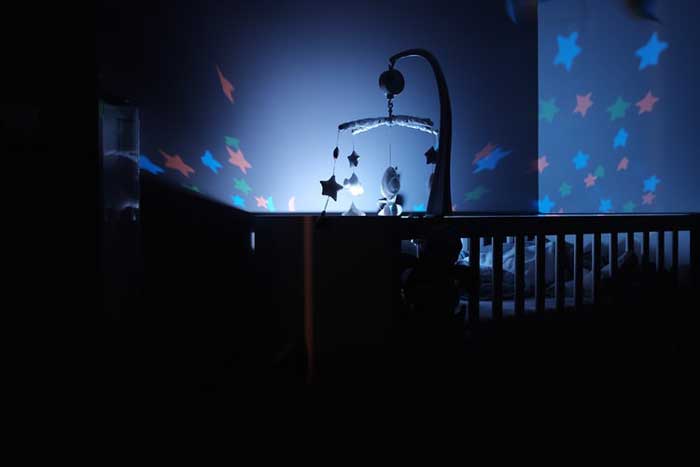How Much Nap Does Your Child Need?
Every child needs a lot of sleep – how much exactly is difficult to say, since it is an individual feature ruled by many factors, especially the child’s age. But one thing is certain, your baby will sleep at night and during the day. Those who enjoy a long night’s sleep can go easy on afternoon naps, while those sleeping under nine hours at night are apt to go to bed for a long afternoon stretch. Can we say which is more beneficial for a child?
 Naps are very important
Naps are very important
Parents never underestimate the benefits of napping. They know how necessary a good sleep is for maintaining perfect health, and the little ones shouldn’t lack it – so they are only happy to have shuteyes during the day. They are doing some very fast development, both physically and mentally, and they appreciate their chances to take a rest from it and wind down. If for some reason or other they don’t get sufficient sleep, it can spoil their day’s mood and even interfere with a good night’s sleep. Meanwhile, with the kid(s) asleep, parents can take a breather and catch up on some neglected household chores.
Age and sleep requirements
The first half year: newborns are apt to sleep from 14 to 18 hours each day. Younger ones can sleep almost incessantly through the day waking only to be fed after a couple of hours. Towards the age of four months babies begin to fall into a settled sleeping rhythm. The usual time is from 9 to 12 hours, mostly at night, including feeding periods; when the day comes it’s generally about 2 naps of a duration from half-hour up to two hours.
The second half year: after the sixth month a baby settles with around 14 hours per day, again taking into account two daily naps which may last up to several hours. Some of them already begin to sleep through the night without waking up for feeding – although it may be fraught with developing separation anxiety that in its turn causes disturbed sleep.
The second and third years: toddlers’ sleep lasts about 12 or 14 hours with (mostly) one daytime nap that can last up to three hours. Infants just over a year may want two naps; parents should see to it that they don’t take their nap late in the evening – after that toddlers may find it hard to go to sleep at night.
The fourth and fifth years: usual night sleep up to 12 hours, one daytime nap. By the end of the fifth year many kids no longer want to sleep in the afternoon.
Young schoolers (over 5 years old): after five it is common for a child to sleep 10 or 11 hours. If a child gets along without a nap, it may be a good idea to put them to bed earlier than usual.
How to detect sleep deprivation
Parents may fail to assess correctly the duration of sleep for the child, so it’s advisable to analyze the behavior of the infant for symptoms of insufficient sleep. The most glaring symptom is tiredness, but there may be less obvious problems related to behavior and achievements at school.
The questions to be posed are:
- Does the kid seem sleepy in the afternoon?
- Do they display irritability and irrational behavior, especially towards evening?
- Does the infant wake up in the morning easily?
- Do they evince poor attention, touchiness, abnormally high activity bordering on aggression?
- Can the kid concentrate on performing his chores and tasks?
Getting one or more yeses should be an incentive to reassess the sleep schedule of the youngster. If they need serious reassessment, the process can require a few weeks until a satisfactory routine has been worked out. You may need to consult the family physician for expert advice.
Setting a nap schedule and developing good napping habits
Napping should be managed at the earliest stage by setting a routine and observing it day after day. If your baby is little and therefore taken to daytime naps, as soon as they begin to rub their eyes, get them to bed catching the moment when they are on the verge of dropping off but haven’t gone to sleep yet. This sets a habit of infants falling asleep not accidentally, but purposefully, which may not be important at the moment but will serve its purpose later.
Help the infant into a comfortable sleep arranging for them to have soft lighting, quiet music and maybe a fitting story or some verses to soothe them into sleep and provide for peace of mind for the period.
When the kid has grown into the toddling age and later, a nap schedule is apt to get disrupted – some will be happy to have their nap, while some others will be eager to go on with their favorite activities at the expense of enjoying their nap. They want to sleep but they will resist the urge.
You don’t want to breed napping problems then – instead of exercising authority to make the kid go to bed, suggest they switch on to a quieter activity like reading or playing a more sedentary game. This will either take them on to a drowsy state or will give them the rest their body needs. If the child doesn’t seem to need afternoon naps any more, get them to bed for their night’s sleep earlier.
Parents may bу given to worrying thinking daytime naps – especially late afternoon ones – might encroach on the regular bedtime; yet it’s not worth your while to stop napping straightaway. If your child is not tired, he will fall asleep more quickly than an overtired kid who will be given to restlessness and irritable outbreaks. This kind is also known to wake up during the night more often.
It may occur that the kid’s tendency for late-afternoon napping does interfere with his night sleep; in this case, encourage him to take his nap earlier in the day. If you deem it necessary, wake him at an earlier time in the morning making him want his nap earlier still.
As an alternative, if your kid goes to sleep fairly late, why not wake him before he wakes up himself so as to give him more active time before retiring for the night. Try playing around with naptime before you forgo it altogether, for you may make your child and yourself happier by sticking to napping as long as it can remain reasonably beneficial.



